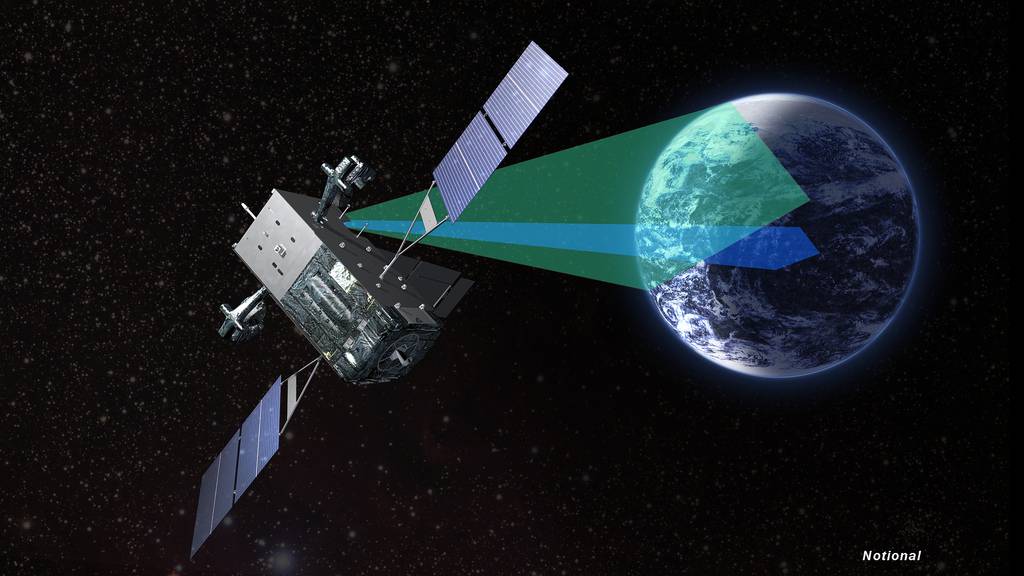Open architectures are the future for the military’s command and control ground system, and Booz Allen wants to play a big part in designing that future.
The Trump administration has ramped up its focus on space as a war fighting domain with the establishment of the Space Development Agency, the reestablishment of US Space Command and the imminent establishment of a Space Force. While those actions have ignited conversations in the military space community over what new assets the Pentagon needs on orbit and who exactly should be in charge of building and managing them, Booz Allen prefers to look to the ground.
“Space operators and space war fighters are going to need to access data and information so that they can make better decisions,” said Chris Bogdan, Booz Allen’s senior vice president in charge of military space activities. Prior to joining Booz Allen, Bogdan served in the Air Force for 34 years and was the program executive office for the F-35. “And that means that Booz Allen is going to try and build open architectures for data platforms, for command and control platforms. We’re going to try and protect the networks with our cybersecurity capabilities.”
With the reestablishment of U.S. Space Command and the Air Force’s continued interest in building a common ground system, the company sees plenty of opportunities for building open architecture ground infrastructure for national security space.
"We prefer to build data platforms that are open architecture, and they’re modular and they’re not proprietary and you can bring in different applications very very easily from many different vendors and you can do that quickly.”
Bogdan compared the open architecture configuration to an iPhone. While the iPhone software is designed by Apple, it’s built so that non-Apple companies can build hundreds of apps that users can pick and choose from to install onto the platform. Similarly, DoD’s ground systems need to be built with a common framework that multiple vendors can design applications for.
That hasn’t exactly been the military’s governing philosophy to date.
“What we saw in space over the last 30, 40 years with industry was every satellite constellation had its own command and control system, its own stovepiped data system, its own communication systems and they never linked together. And so DoD got caught in vendor lock. Any time they wanted to upgrade something, any time they wanted to improve something, any time they wanted to make changes, they were stuck with that very same vendor and it took a very long time and it cost a lot of money to upgrade those systems,” explained Bogdan.
But even if it’s clear that open architecture is the path forward, any new common ground system will have to deal with the fact that there are a significant number of DoD satellite systems with stovepiped architectures. A common ground system with an open architecture will have to be backward compatible with legacy systems built with closed architectures and proprietary software. It’s kind of like asking Sony to build a PS4 that can play video games built for the Nintendo 64, Sega Genesis and Game Boy, but a lot harder.
A prime example of this move to open architectures and a common ground system is the Future Operationally Resilient Ground Evolution, an Air Force project that is being prototyped. FORGE is a new ground system for the Space-Based Infrared System, the United States’ missile detection satellites. As is the case with most military satellite systems, SBIRS was built with a closed architecture that makes updates difficult and prevents the use of third party applications. FORGE will replace SBIRS’ current stovepiped architecture with an open architecture that the Air Force can run new apps on top of.
While FORGE is specifically built for SBIRS, Bogdan is clear that it has larger applications than just one satellite system.
“The FORGE program that we’re competing on right now (...) is one step in that direction,” he said. “What the Air Force wants to do is they want to create basically an open architecture ground system foundation that can be replicated with different satellite constellations, because if you build it open and you build it modular and you build it with cybersecurity already built in, now adding the different kinds of applications that you need makes life so much easier. It’s scalable, it’s extensible to new missions, it’s upgradable and it’s a whole lot cheaper than what they’re doing.”
Booz Allen was one of four companies selected by the Space Enterprise Consortium to build a FORGE prototype, and Bogdan said he expects a downselect from the remaining three competing companies for that contract around the end of October.
Nathan Strout covers space, unmanned and intelligence systems for C4ISRNET.








